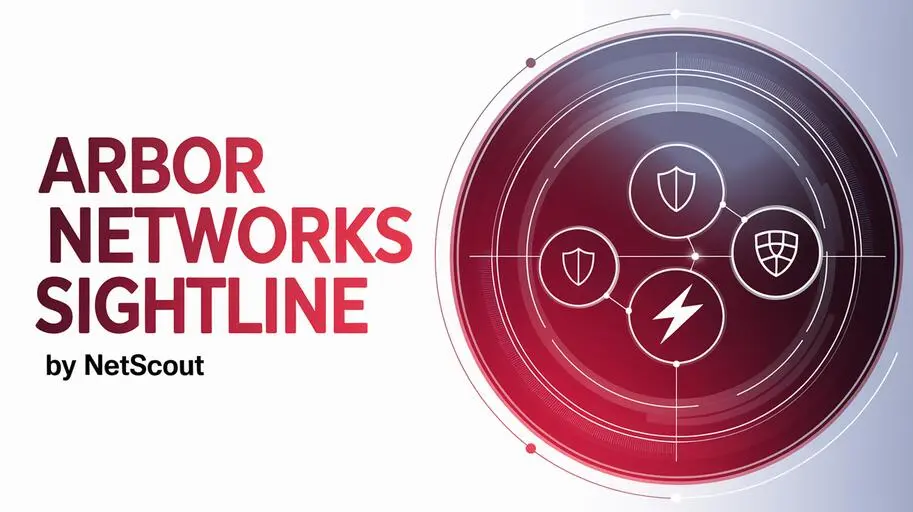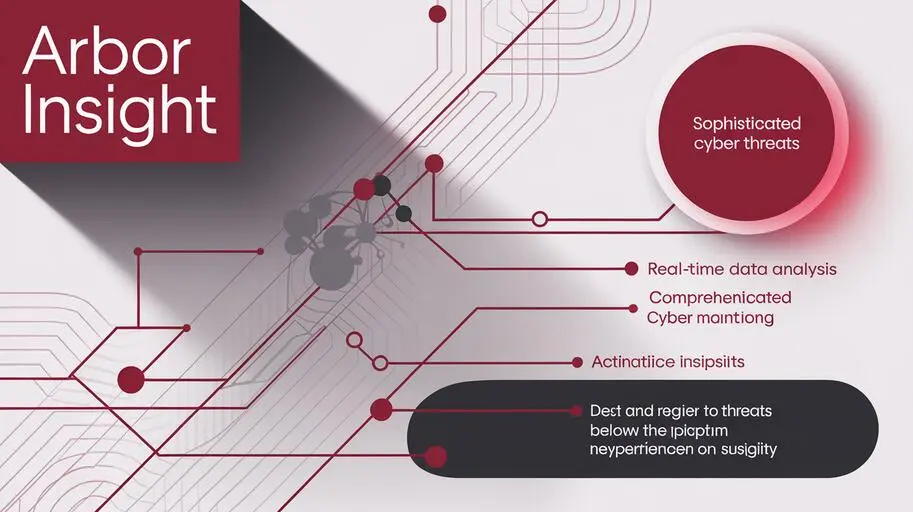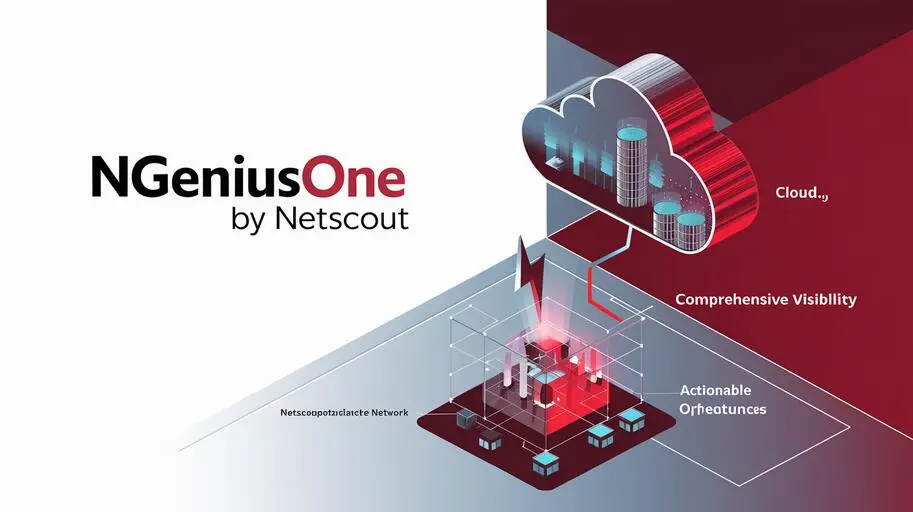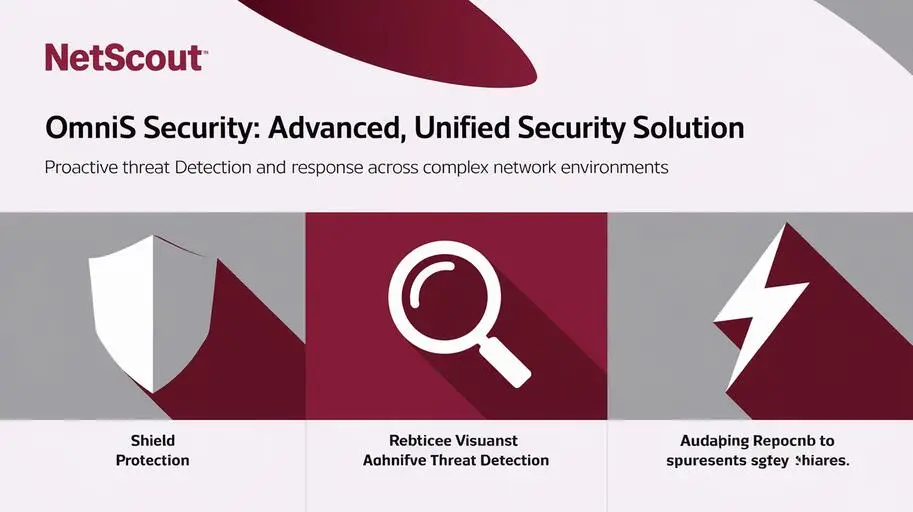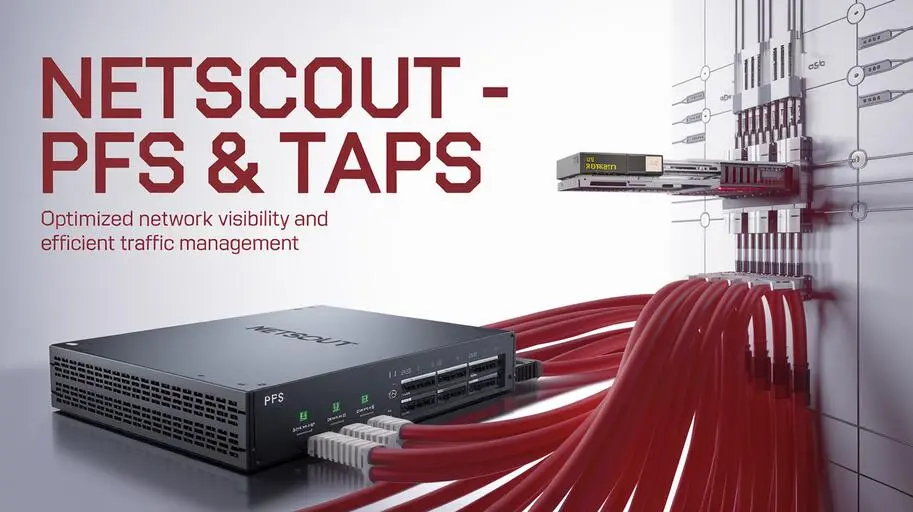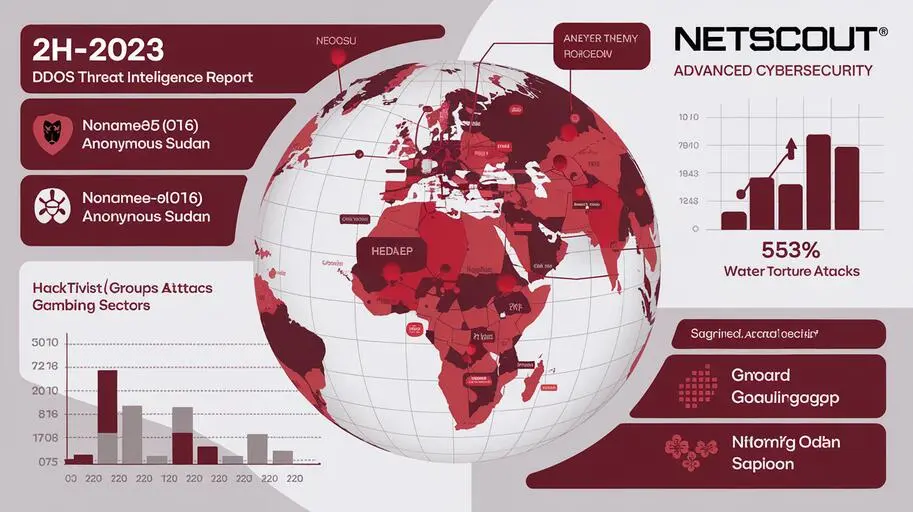
In today’s digital landscape, where the availability of online services is critical for business, DDoS attacks (Distributed Denial of Service) have become a serious threat to network infrastructure. Imagine a situation: your website or critical applications become unavailable due to a sudden surge in traffic that paralyzes your systems and drives away customers. This is a reality that many organizations face every day. To effectively counter these threats, a reliable and multi-layered DDoS protection is needed. Arbor Sightline and TMS (Threat Management System) offer a comprehensive solution to provide such protection, combining network anomaly detection capabilities with effective traffic scrubbing. In this article, we will take a detailed look at how these products work together to provide reliable protection for your network resources.
What is Multi-Layered DDoS Protection and Why is it Important?
Traditional DDoS protection methods, such as firewalls and intrusion detection systems (IDS), are often ineffective against modern, sophisticated attacks. DDoS attacks are becoming increasingly voluminous, sophisticated, and distributed, using various techniques to bypass traditional protection measures. This is why multi-layered DDoS protection is a necessity. It involves using multiple layers of protection that work together to detect and mitigate various types of attacks, providing more reliable and resilient protection.
Benefits of Multi-Layered Protection
- Improved Detection: Multi-layered protection allows you to detect a wider range of attacks, including complex and targeted attacks.
- More Effective Mitigation: Different layers of protection can be used to mitigate different types of attacks, providing a more flexible and effective approach.
- Reduced False Positives: Multi-layered protection can reduce the number of false positives, allowing IT professionals to focus on real threats.
- Increased Resilience: Multi-layered protection increases the network’s resilience to DDoS attacks, minimizing downtime and ensuring business continuity.
Arbor Sightline: DDoS Attack Detection and Analytics
Arbor Sightline is a powerful network traffic detection and analysis platform that provides deep visibility into your network. It collects and analyzes traffic data, identifying anomalies and suspicious activity that may indicate a DDoS attack. Sightline uses various detection methods, including behavioral analysis, signature rules, and machine learning, to accurately and quickly identify attacks.
How Arbor Sightline Works
- Data Collection: Sightline collects network traffic data from various sources, such as routers, switches, and other network devices.
- Traffic Analysis: Sightline analyzes the collected data, identifying anomalies and suspicious activity that may indicate a DDoS attack. It uses various analysis methods, including behavioral analysis, signature rules, and machine learning.
- Attack Detection: Sightline detects DDoS attacks based on traffic analysis and alerts IT professionals to ongoing attacks.
- Visualization and Reporting: Sightline provides visualization of attack data and generates reports that help IT professionals understand and respond to attacks.
Key Features of Arbor Sightline
- Deep Network Visibility: Sightline provides deep visibility into your network, allowing you to see what is happening in your network in real-time.
- Anomaly Detection: Sightline detects anomalies in network traffic that may indicate a DDoS attack.
- Behavioral Analysis: Sightline analyzes network traffic behavior, identifying suspicious activity that may indicate an attack.
- Signature Rules: Sightline uses signature rules to detect known DDoS attacks.
- Machine Learning: Sightline uses machine learning to detect new and unknown DDoS attacks.
Arbor TMS: Traffic Scrubbing and DDoS Protection
Arbor TMS (Threat Management System) is a traffic scrubbing platform used for DDoS attack protection. It accepts traffic redirected from Sightline and scrubs it of malicious traffic before it reaches your servers. TMS uses various traffic scrubbing methods, including filtering, rate limiting, and traffic redirection, to effectively mitigate attacks. TMS can be deployed on-premise or in the cloud, providing flexibility and scalability.
How Arbor TMS Works
- Traffic Redirection: Sightline detects a DDoS attack and redirects attack-affected traffic to TMS.
- Traffic Scrubbing: TMS scrubs traffic of malicious traffic using various traffic scrubbing methods, including filtering, rate limiting, and traffic redirection.
- Return of Clean Traffic: TMS returns the cleaned traffic to your servers, ensuring the availability of your online services.
Key Features of Arbor TMS
- Multi-Layered Protection: TMS uses multiple layers of protection to effectively mitigate DDoS attacks.
- Flexibility and Scalability: TMS can be deployed on-premise or in the cloud, providing flexibility and scalability.
- Automated Mitigation: TMS automates the DDoS attack mitigation process, reducing the load on IT professionals.
- Integration with Sightline: TMS integrates with Sightline, providing a comprehensive DDoS protection solution.

Hybrid DDoS Protection: Benefits of Combining Sightline and TMS
Hybrid DDoS protection, offered by Arbor, combines the attack detection capabilities of Sightline and the traffic scrubbing capabilities of TMS, providing a comprehensive and effective solution for DDoS attack protection. This model uses a distributed approach, where Sightline performs attack detection at the network level, and TMS performs traffic scrubbing at the application level. This allows organizations to protect their infrastructure from a wide range of DDoS attacks, from simple network-level attacks to complex application-level attacks.
Benefits of the Hybrid Model
- Improved Detection: Sightline provides deep network visibility and allows you to detect a wide range of attacks, including complex and targeted attacks.
- More Effective Mitigation: TMS uses various traffic scrubbing methods to effectively mitigate various types of attacks.
- Reduced Costs: The hybrid protection model allows organizations to optimize their DDoS protection costs by using on-premise protection to mitigate small attacks and cloud protection to mitigate large attacks.
- Increased Resilience: The hybrid protection model increases the network’s resilience to DDoS attacks, minimizing downtime and ensuring business continuity.
How Sightline and TMS Integration Works
The integration of Sightline and TMS works as follows:
- Sightline detects a DDoS attack and sends an alert to TMS.
- TMS receives the alert and begins scrubbing the attack-affected traffic.
- TMS scrubs the traffic of malicious traffic and returns the cleaned traffic to your servers.
- Sightline continues to monitor traffic and sends additional alerts to TMS if the attack changes or intensifies.
Building a Scrubbing Center Using Arbor Sightline and TMS
For large organizations and Internet service providers (ISPs) that need a high degree of control over their traffic and security, building a scrubbing center using Arbor Sightline and TMS is the optimal solution. A scrubbing center is a specialized traffic scrubbing center designed to filter malicious traffic that is directed at target resources. Sightline is used to detect and analyze attacking traffic, and TMS is used to scrub it. This approach allows organizations to effectively protect their networks and services from DDoS attacks.
Benefits of Using a Scrubbing Center
- Full Control: A scrubbing center provides organizations with full control over their traffic and security.
- High Performance: A scrubbing center can handle large volumes of traffic, providing high performance even during DDoS attacks.
- Customizability: A scrubbing center can be customized to meet the specific needs of the organization.
- Cost-Effectiveness: A scrubbing center can be more cost-effective than using cloud-based DDoS protection services, especially for organizations with large volumes of traffic.
Steps to Build a Scrubbing Center
- Planning: Define the requirements for the scrubbing center, including bandwidth, performance, and security features.
- Hardware and Software Selection: Select hardware and software that meets your requirements. This includes Arbor Sightline and TMS, as well as network equipment such as routers and switches.
- Deployment: Deploy the hardware and software in your data center.
- Configuration: Configure Sightline and TMS to detect and scrub traffic on your network.
- Testing: Test the scrubbing center to ensure that it is working correctly.
- Monitoring: Continuously monitor the scrubbing center to ensure that it continues to work correctly.
Solving Specific Problems with Arbor Sightline and TMS
Arbor Sightline and TMS solve a number of specific problems that organizations face when protecting against DDoS attacks:
- Detection of Complex Attacks: Sightline uses advanced detection methods, such as behavioral analysis and machine learning, to detect complex attacks that may bypass traditional protection methods.
- Mitigation of Volumetric Attacks: TMS uses various traffic scrubbing methods, such as filtering, rate limiting, and traffic redirection, to effectively mitigate volumetric attacks that can overload your network.
- Protection Against Application-Level Attacks: TMS can protect against application-level attacks, such as HTTP floods and SQL injections, that can disrupt the operation of your web applications.
- Automation of Protection: Sightline and TMS automate the DDoS attack protection process, reducing the load on IT professionals and ensuring a rapid response to attacks.
Consider an example: a large online store is experiencing a series of DDoS attacks that are causing website unavailability and lost sales. The implementation of Arbor Sightline made it possible to identify abnormal traffic and determine the source of the attacks. Then, using Arbor TMS, the traffic was redirected to the scrubbing center, where malicious packets were filtered out, and legitimate traffic was sent back to the website. As a result, the website remained available to customers, and the company was able to avoid significant financial losses.
Key Benefits of Arbor Sightline and TMS for Multi-Layered DDoS Protection
Arbor Sightline and TMS provide reliable protection against DDoS attacks, thanks to their deep understanding of network traffic, detection capabilities, and traffic scrubbing capabilities. They allow organizations to stay one step ahead of attackers and protect their critical network resources.
- Comprehensive Protection: Arbor Sightline and TMS provide comprehensive protection against a wide range of DDoS attacks.
- High Performance: Arbor Sightline and TMS can handle large volumes of traffic, providing high performance even during DDoS attacks.
- Automation: Arbor Sightline and TMS automate the DDoS attack protection process, reducing the load on IT professionals.
- Integration: Arbor Sightline and TMS integrate with each other, providing a comprehensive DDoS protection solution.
Arbor Sightline and TMS are powerful and effective tools for multi-layered DDoS protection. They provide deep network visibility, allow you to quickly detect and mitigate attacks, and help organizations protect their critical network resources. To learn more about how Arbor Sightline and TMS can help you protect your network, request a consultation on our website.
Frequently Asked Questions on: Multi-Layer DDoS Protection with Arbor Sightline and TMS
-
What is multi-layer DDoS protection and why is it so important?
Multi-layer DDoS protection is a comprehensive approach that uses multiple layers of defense to detect and mitigate DDoS attacks. It is important because traditional methods often fail to cope with modern, complex, and voluminous attacks. It provides more reliable and resilient protection. -
How does Arbor Sightline help in detecting DDoS attacks?
Arbor Sightline is a platform for detecting and analyzing network traffic. It collects and analyzes data, identifying anomalies and suspicious activity that indicate DDoS attacks. Sightline uses behavioral analysis, signature rules, and machine learning for accurate and rapid detection. -
What role does Arbor TMS play in protecting against DDoS attacks?
Arbor TMS (Threat Management System) is a traffic scrubbing platform. It accepts traffic from Sightline and filters malicious traffic before it reaches your servers. TMS uses filtering, rate limiting, and traffic redirection to effectively mitigate DDoS attacks. -
What is hybrid DDoS protection and what benefits does it offer?
Hybrid DDoS protection combines the detection capabilities of Sightline and the traffic scrubbing of TMS. Benefits include improved detection, more effective mitigation, reduced costs through the use of on-premise and cloud protection, and increased network resilience. -
What is a scrubbing center and when should it be used?
A scrubbing center is a specialized traffic scrubbing center designed to filter malicious traffic. It should be used by large organizations and Internet Service Providers (ISPs) who need a high level of control over traffic and security, as well as to handle large volumes of traffic. -
What specific problems do Arbor Sightline and TMS solve when protecting against DDoS attacks?
Arbor Sightline and TMS solve the problems of detecting complex attacks, mitigating volumetric attacks, protecting against application-level attacks, and automating DDoS protection. -
What are the key benefits of Arbor Sightline and TMS for multi-layer DDoS protection?
Key benefits include comprehensive protection, high performance, protection automation, and integration with each other, providing a comprehensive DDoS protection solution. -
How do Sightline and TMS integrate to provide protection?
Sightline detects a DDoS attack and sends an alert to TMS. TMS receives the alert and begins scrubbing the traffic affected by the attack. TMS cleans the traffic of malicious traffic and returns the cleaned traffic to your servers. -
Can Arbor TMS be deployed in the cloud?
Yes, Arbor TMS can be deployed both on-premise and in the cloud, providing flexibility and scalability for your organization. -
What needs to be considered when planning a scrubbing center?
When planning a scrubbing center, you need to determine the requirements for bandwidth, performance, and security features, as well as select the appropriate hardware and software, including Arbor Sightline and TMS.
